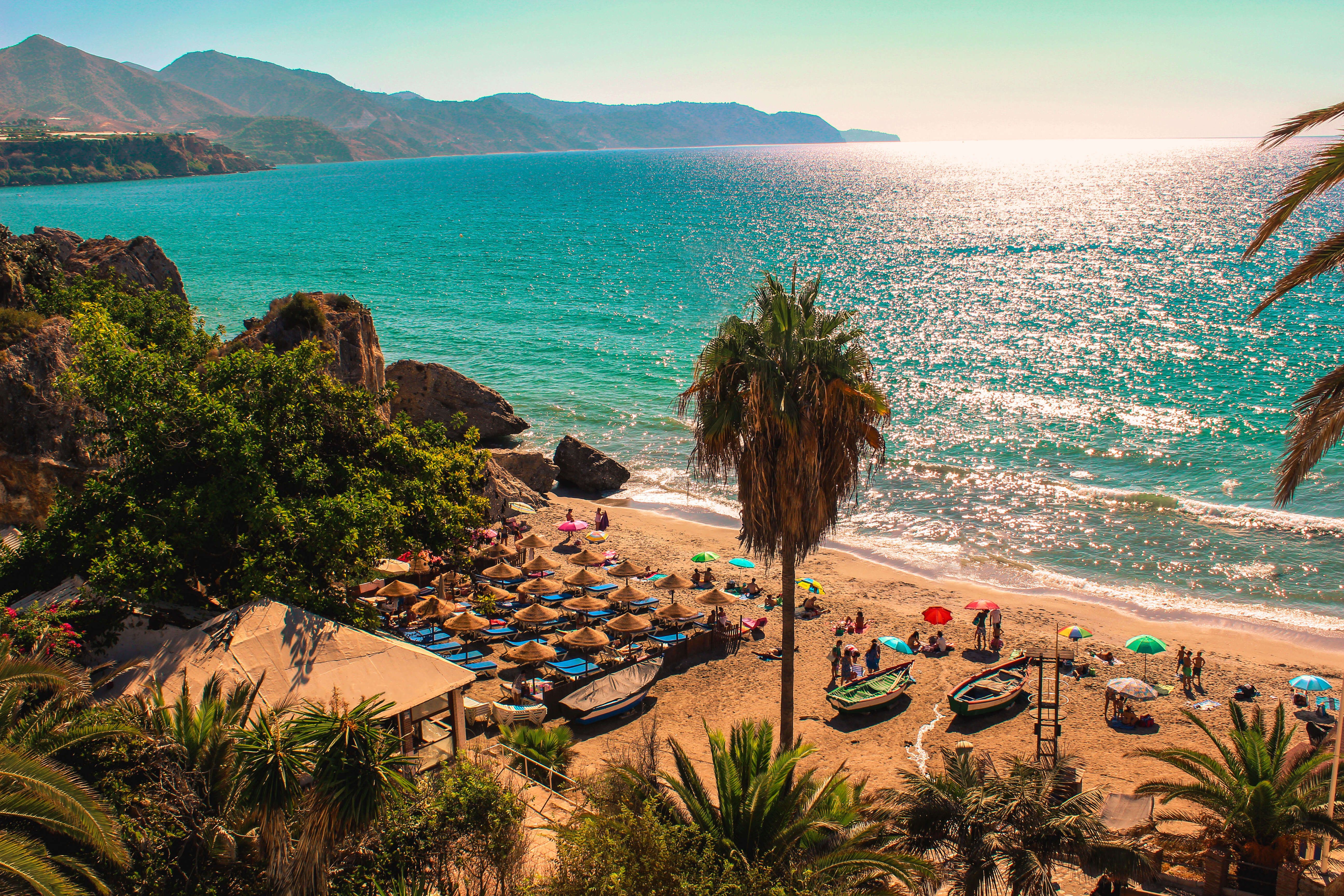Essential Information
Population

Nerja officially counts about 21,000 residents, though the actual number fluctuates wildly with seasons. Approximately 30% of the registered population is foreign, with Britons forming the largest expatriate group, followed by Germans, Scandinavians, and a growing contingent of remote-working digital nomads from across Europe and North America. The town has several distinct neighbourhoods, each with their own character: the historic centre remains predominantly Spanish, Capistrano Village attracts a significant Northern European contingent, while Burriana Beach has evolved into a more international enclave. Unlike many Costa del Sol destinations, Nerja's development has been relatively controlled, with strict height limitations preserving its low-rise skyline and Andalusian architecture. Source: Instituto Nacional de Estadística.
Healthcare in Nerja

Nerja's Centro de Salud on Calle Frigiliana provides basic public healthcare services. For serious medical issues, Hospital Comarcal de la Axarquía in Torre del Mar is a 15-minute drive away—a modern facility with all essential specialties and a good reputation.
Private healthcare options include Clinica Santa Cecilia in the town centre, offering English-speaking doctors and specialists with same-day appointments (consultation fees from €60), and the larger Vithas Salud Rincon in nearby Rincón de la Victoria with more comprehensive services.
International residents typically opt for private health insurance, with comprehensive policies starting around €120 monthly for those under 65. Companies like ASSSA and Sanitas offer packages specifically designed for expatriates, including crucial services like medical translation.
Nerja's climate deserves mention in any healthcare discussion—the unique microclimate created by the mountains meeting the sea results in low humidity and exceptional air quality. The area has historically attracted respiratory patients, with local estate agents enthusiastically sharing stories of miraculous recoveries among former asthmatics (approach such tales with appropriate skepticism, but the air quality metrics don't lie).
To find out more, check out our comprehensive guide to the Spanish healthcare system.
Working in Nerja

Let's be frank: Nerja's traditional job market largely revolves around tourism and its supporting services—hospitality, retail, property management, and construction. These sectors offer plenty of seasonal opportunities but fewer paths to stable, year-round employment with competitive salaries.
However, the remote work revolution has transformed Nerja's employment landscape dramatically. The town now boasts several co-working spaces, including the stylish CoWorkingNerja near the Balcón de Europa offering hot desks from €15 daily or monthly memberships from €150, and the more budget-friendly Hygge House Coworking in a converted townhouse with a sunny roof terrace workspace. Both provide fibre optic internet connections and international communities of digital professionals who gather for networking events and Friday afternoon beers.
Internet infrastructure has improved significantly, with fibre optic now available in most parts of town offering speeds up to 600 Mbps—more than adequate for video conferencing and file transfers. However, some rural properties on the outskirts still struggle with reliable connections, something to verify before purchasing if remote work is in your plans.
Entrepreneurial opportunities exist particularly in tourism-adjacent services—property management, vacation rentals, tour operations, and specialty retail. Several language schools, including ESL Language Centre, regularly seek native English, German and Scandinavian speakers as teachers, particularly during the busy spring and autumn periods when language students flock to the town.
For those needing to commute occasionally, Málaga city and its technology park—home to over 600 companies including some international tech giants—lies about 50 minutes away by car, offering more corporate opportunities while still allowing for Nerja living.
Check out our handy guide for more information on finding a job in Spain.
Schools & education in Nerja

Nerja offers several public education options including two primary schools (CEIP Joaquín Herrera and CEIP Narixa) and one secondary school (IES El Chaparil), all following the Spanish curriculum. While facilities might not impress those used to premium private education, the schools have integrated international students successfully for decades, with additional language support available for non-Spanish speakers.
For families seeking international curricula, options include Sunny View School in nearby Torremolinos (about 45 minutes away) offering the British curriculum, and The English International College in Marbella (one hour away) providing British education in more luxurious surroundings. Both schools operate bus services that collect children from central points along the coast.
Many international families face the education dilemma—local Spanish schools offer authentic integration and rapid language acquisition but can present academic challenges initially, while international schools provide curriculum continuity but at significantly higher cost and with longer commutes.
For adults, Nerja is home to numerous language schools including the renowned Escuela de Idiomas Nerja, where intensive Spanish courses start from €180 weekly. The town's cultural centre also offers subsidised language classes and various arts programs for residents.
Check out our finding the right school for your expat family article or listen to our schools and education in Spain podcast episode for more information.
Getting around Nerja

Nerja's compact historic centre is best navigated on foot, with most amenities accessible within a 15-minute walk from the Balcón de Europa. The town's hilly topography provides excellent cardio workouts disguised as grocery shopping expeditions, though the scenic vistas from the higher streets usually justify the exertion.
For exploring beyond the centre, local buses operated by Alsa connect different neighbourhoods and beaches, with tickets costing approximately €1.20 per journey. The same company provides intercity services linking Nerja to Málaga (journey time approximately 1 hour 15 minutes, fare €4.30), Torre del Mar, and other coastal towns.
Most residents consider a car essential for fully enjoying the region, particularly for accessing the stunning mountain villages of the Axarquía like Frigiliana and Cómpeta. Parking in central Nerja requires either saint-like patience or the use of paid underground facilities (around €15 daily), though most residential areas offer free street parking with varying degrees of availability.
The A-7 motorway puts Málaga and its international airport approximately 50 minutes away by car, while the scenic coast road (N-340) offers a slower but more picturesque alternative. For those preferring to avoid driving, airport transfers can be arranged through numerous local companies from around €65 one-way, and Welcome Pickups offers a more premium service with English-speaking drivers.
Electric bikes and scooters have become increasingly popular for navigating the town and its surroundings, with rental shops like Cyclenerja Bike Rental offering daily rentals from €25—an excellent compromise between mobility and parking convenience.









